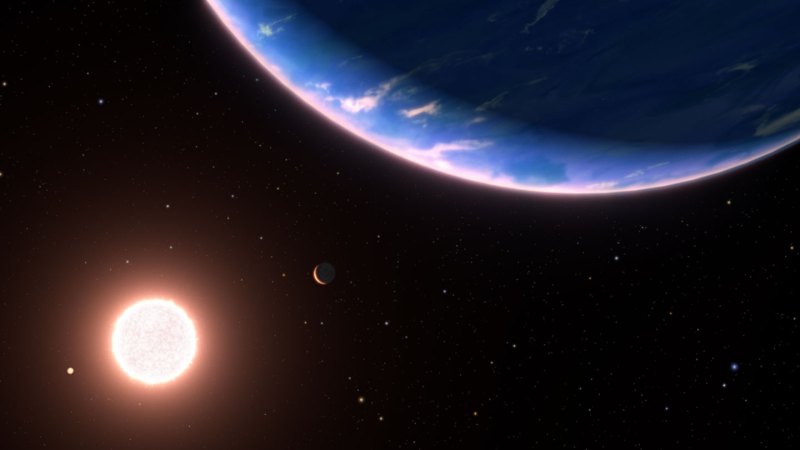
This exoplanet’s atmosphere is going full steam ahead.
A planet beyond our solar system called GJ 9827d has an atmosphere composed almost entirely of hot water molecules, astronomers report in Astrophysical Journal Letters October 4.
“We’re using the term ‘steam world,'” says astronomer Ryan MacDonald at the University of Michigan in Ann Arbor.
GJ 9827d was discovered in 2017 orbiting a star about 100 light years from Earth. About twice the size of Earth and three times the mass of Earth, it is a type of planet called sub-Neptune. (SN: 8/8/22). Worlds like this are the most common in the galaxy, although our solar system has none.
But just knowing the size and mass of the planet is not enough to deduce what it is made of. To probe exoplanet skies, astronomers analyze the starlight that filters through the planet’s atmosphere as it passes in front of its parent star. (SN: 6/7/24).
MacDonald and colleagues used the James Webb Space Telescope to observe two such transits or transits of GJ 9827d in November 2023. The Hubble Space Telescope had made similar observations and seen signs of water molecules in the planet’s atmosphere, astronomers reported last year . But it wasn’t enough to tell if the atmosphere had just a little water in it, or if it was an entire watery world.
Combining the views of the two telescopes made it abundantly clear that the atmosphere was almost all water. The temperature of the planet is about 340 ° Celsius, so all that water must be steam.
Such steamy worlds “have been predicted, but this is the first observational evidence that they really exist,” says Macdonald. “I feel like a Star Trek explorer.”
There may not be a solid rocky surface beneath the planet’s steamy sky. Deep in the atmosphere, the pressure from all that water must increase enough to force the water molecules into strange and exotic forms of matter, like supercritical fluids or hot, high-pressure ice, MacDonald says.
This makes GJ 9827d an unlikely place to find life. But studying its atmosphere is good practice for observing potentially habitable planets.
“It’s proof of principle that we can detect heavier atmospheres,” says MacDonald. “We’re on the right track to where we want to be, astrobiologically.”
#JWST #marks #steamed #world
Image Source : www.sciencenews.org